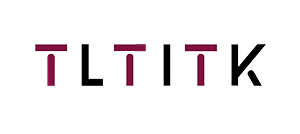Ошибка формата электронной почты
emailCannotEmpty
emailDoesExist
pwdLetterLimtTip
inconsistentPwd
pwdLetterLimtTip
inconsistentPwd

Новости
Здесь вы можете описать кусок текста, который хотите выразить

5 Interactive Whiteboard Features to Boost Classroom Engagement by 200%
Interactive whiteboards (IWBs) have revolutionized the modern classroom, providing teachers and students with dynamic, engaging, and collaborative learning experiences. The integration of these smart tools can significantly boost classroom participation, fostering better communication, creativity, and active learning. Here are five key features of interactive whiteboards that can elevate classroom engagement by 200%.
1. Real-Time Collaboration
One of the standout features of an interactive whiteboard is its ability to facilitate real-time collaboration. Students can write, draw, and manipulate content on the board simultaneously, allowing for collective problem-solving and idea generation. This hands-on approach encourages active participation, making lessons more engaging and interactive. Group activities, brainstorming sessions, and team-based projects all benefit from the collaborative potential of IWBs.
2. Multimedia Integration
Interactive whiteboards support a wide range of multimedia formats, such as videos, audio, and images, making learning more dynamic and immersive. By incorporating videos, animations, and interactive simulations into lessons, teachers can cater to different learning styles. Visual learners, auditory learners, and kinesthetic learners can all benefit from the multi-sensory experience, keeping them engaged and motivated throughout the lesson.
3. Instant Feedback
IWBs allow teachers to provide immediate feedback to students, an essential component for reinforcing learning and boosting engagement. Whether it's through quizzes, polls, or interactive exercises, students can receive real-time evaluations of their work. This instant feedback helps students stay on track, identify areas of improvement, and feel more connected to the learning process, leading to higher participation and better outcomes.
4. Interactive Quizzes and Polls
Using the interactive features of whiteboards, teachers can create engaging quizzes and polls during lessons. This fosters friendly competition and encourages students to actively participate. Instant polling results can be displayed on the board, sparking discussions and motivating students to share their thoughts. These interactive elements break the monotony of traditional lectures and create an engaging environment where students feel more involved in the learning process.
5. Personalized Learning
Interactive whiteboards provide personalized learning opportunities by allowing teachers to tailor content to suit individual student needs. Whether it's adjusting the difficulty of a lesson, providing supplementary materials, or offering extra practice, IWBs help teachers cater to a diverse range of learning abilities. By providing students with content that aligns with their learning pace and preferences, teachers can ensure that every student stays engaged and motivated.
Conclusion
Interactive whiteboards are more than just a tool for presenting information—they are powerful devices that foster collaboration, creativity, and active participation in the classroom. By leveraging real-time collaboration, multimedia integration, instant feedback, interactive quizzes, and personalized learning, teachers can enhance student engagement by 200%. With these features, the classroom becomes an exciting and interactive environment where learning becomes a more enjoyable and meaningful experience for everyone.

